
The International Council of The Museum of Modern Art
2020 SPRING MEETING IN INDIA
DAY 1
Tuesday, January 21: MUMBAI
-
Morning
OPTIONAL: Morning trip to Elephanta.
-
Lunch
Lunch at leisure.
-
Afternoon
OPTIONAL: Artist’s studio and gallery visits nearby the Taj.
-
5:00 p.m.
Official opening of the Spring Meeting in a reception room at the Taj.
-
Dinner
Evening Dinner at a private home.
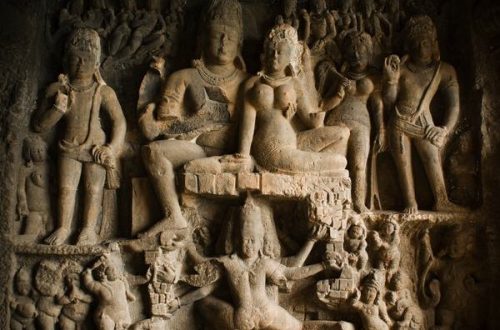
Elephanta
Northeast of the Gateway of India in Mumbai Harbour, the rock-cut temples on Gharapuri, better known as Elephanta Island, are a Unesco World Heritage Site. Created between AD 450 and 750, the labyrinth of cave temples represent some of India’s most impressive temple carving. The main Shiva-dedicated temple is an intriguing latticework of courtyards, halls, pillars and shrines; its magnum opus is a 6m-tall statue of Sadhashiva, depicting a three-faced Shiva as the destroyer, creator and preserver of the universe, his eyes closed in eternal contemplation.
DAY 2
Wednesday, January 22: MUMBAI
-
Morning
Morning Visit the Prince of Wales Museum (also known as the CSMVS Museum).
-
Late Morning
Visit contemporary galleries before lunch.
-
Lunch
At the seafood restaurant Trishna.
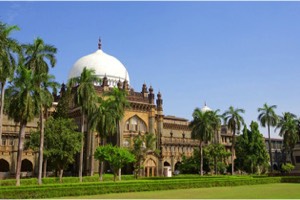
Prince of Wales Museum
The Prince of Wales Museum, now commonly known as 'Chhatrapati Shivaji Maharaj Vastu Sangrahalaya', was established during the early 20th century. This museum is considered as a heritage structure in Mumbai because of its admirable architecture. The Prince of Wales Museum is one of the most significant museums in India. The museum showcases several collections of ancient artworks, sculptures and artifacts in its galleries. After the inception of the renovation project in 2008, many new galleries were opened, which contained artworks of Hindu God Krishna, textiles and Indian traditional costumes.
-
Afternoon
Walk in the adjacent Kala Ghouda area including the Kneesset Eliyahoo Synagogue, restored in part by the World Monuments Fund.
-
Dinner
Evening Supper on the rooftop terrace of a private collector designed by a protégé of Sri Lankan architect Geoffrey Bawa.
-
Overnight
Taj Mahal Palace in Mumbai.

Kneesset Eliyahoo Synagogue
Kala Ghoda is the sort of neighbourhood that inspires Mumbai-centric prose. Art galleries, a museum, warmly-lit cafes and street art define its ethos. And yet, the building that seems to rouse the most intrigue in visitors and locals is the Knesset Eliyahoo Synagogue. Its blue-coloured exterior would make it seem like it is merging with the sky above, or it would make the building stand out against adjacent structures, depending on the time of the day. Jacob Sassoon, the grandson of businessman-philanthropist David Sassoon, built the Knesset Eliyahoo Synagogue in 1884. It was designed by the British architectural firm Gostling & Morris, and was to cater to the local Baghdadi Jewish community.
DAY 3
Thursday, January 23: MUMBAI
-
Morning
Morning Tour of art deco and Gothic architecture including Marine Drive, Victoria Terminus, and the Oval Maidan.
-
Lunch
At restaurant Bombay Canteen.

Victoria Terminus
The Chhatrapati Shivaji Terminus, formerly known as Victoria Terminus Station, in Mumbai, is an outstanding example of Victorian Gothic Revival architecture in India, blended with themes deriving from Indian traditional architecture. The building, designed by the British architect F. W. Stevens, became the symbol of Bombay as the ‘Gothic City’ and the major international mercantile port of India. The terminal was built over 10 years, starting in 1878, according to a High Victorian Gothic design based on late medieval Italian models.
-
Afternoon
Afternoon visit the studios of contemporary artists Reena Kallat and Jitish Kallat.
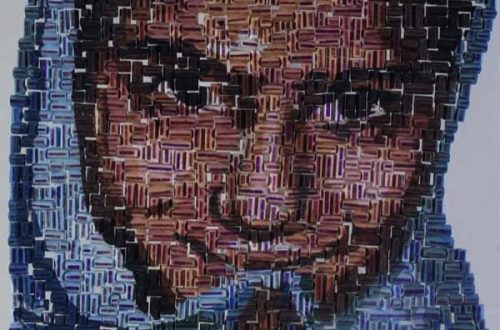
Reena Kallat
Reena Saini Kallat’s practice, encompassing drawing, photography, sculpture, painting, video, and installation, engages diverse materials, imbued with conceptual underpinnings. Her subjects have been diverse and include migration and cultural hybridity, bureaucracy and the place of the individual within the apparatus of the state, cultural amnesia and the loss of heritage, climate change and environmental sensitivity, as well as autobiographical references.

Jitish Kallat
Jitish Kallat was born in Mumbai in 1974, the city where he continues to live and work. Kallat’s vast oeuvre, spanning painting, photography, drawing, video and sculptural installations, reveals his persistent probes into some of the fundamental themes of our existence. His works traverse varying focal lengths and time-scales; from close details of the skin of a fruit or the brimming shirt-pocket of a passerby, it might expand to register dense people-scapes, or voyage into inter-galactic vistas.
-
Late Afternoon
Visit the Dr. Bhau Daji Lad Museum, Mumbai’s oldest museum.
-
Dinner
Evening Dinner at Famous Studios with invited guests.
-
Overnight
Taj Mahal Palace in Mumbai.

Dr. Bhau Daji Lad Museum
This gorgeous museum, built in Renaissance revival style in 1872 as the Victoria & Albert Museum, contains 3500-plus objects centring on Mumbai’s history – photography, maps, textiles, books, manuscripts, bidriware (Bidar's metalwork), lacquerware, weaponry and exquisite pottery. The landmark building was renovated in 2008, with its Minton-tile floors, gilded ceiling mouldings, ornate columns, chandeliers and staircases all gloriously restored.
DAY 4
Friday, January 24: MUMBAI/GOA
-
Morning
Morning Flight to Goa.
-
Lunch
At the 16th century Fort Reis Magos.
-
Afternoon
Late Afternoon Visit Sunaparanta, Goa Center for the Arts, with a talk/performance by artist Nikhil Chopra.
-
Dinner
Evening Dinner as guests of International Council members Dipti and Dattaraj Salgaocar.
-
Overnight
Taj Fort Aguada in Goa.

Sunaparanta, Goa Center for the Arts
Sunaparanta-Goa Centre for the Arts is a non-profit education based arts initiative of Dattaraj V. Salgaocar. The Centre is a strong advocate for the arts in Goa, providing working and exhibition space, assistance with exchange and grant funding initiatives, infrastructural and creative support for special co-operative projects and networking with state, national and international organizations.
DAY 5
Saturday, January 25: GOA
-
Morning
Morning Visit churches in Old Goa.
-
Lunch
At a local restaurant in Panjim.
-
Afternoon
Visit buildings designed by architect Charles Correa.
-
Dinner
Evening Dinner at Bomra.
-
Overnight
Taj Fort Aguada in Goa.
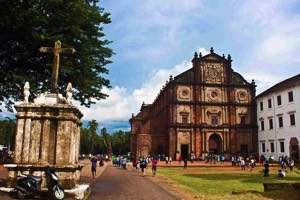
Old Goa
From the 16th to the 18th centuries, when Old Goa’s population exceeded that of Lisbon or London, Goa’s former capital was considered the ‘Rome of the East’. You can still sense that grandeur as you wander what’s left of the city, with its towering churches and cathedrals and majestic convents. Its rise under the Portuguese, from 1510, was meteoric, but cholera and malaria outbreaks forced the abandonment of the city in the 17th century. In 1843 the capital was officially shifted to Panaji. Some of the most imposing churches and cathedrals are still in use and are remarkably well preserved, while other historical buildings have become museums or simply ruins.
DAY 6
Sunday, January 26: GOA/AHMEDABAD
-
Morning
Morning Visit the home of artist Dayanita Singh.
-
Lunch
In town.
-
Afternoon
Afternoon Flight to Ahmedabad.
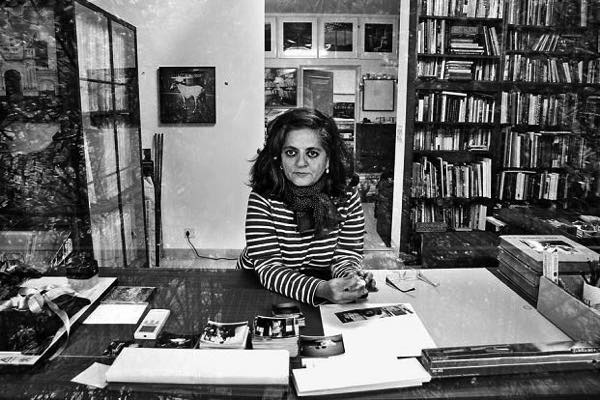
Dayanita Singh
Dayanita Singh's art uses photography to reflect and expand on the ways in which we relate to photographic images. Her recent works, drawn from her extensive photographic oeuvre, are a series of mobile museums that allow her images to be endlessly edited, sequenced, archived and displayed. Stemming from Singh's interest in the archive, her installations present photographs as interconnected bodies of work that are replete with both poetic and narrative possibilities. Publishing is also a significant part of the artist's practice: in her books, often published without text, Singh extends her experiments on alternate forms of producing and viewing photographs.
-
Late Afternoon
Visit the Kasturbhai Lalbhai Museum, recently renovated by architect Rahul Mehrotra.
-
Dinner
Evening Performance and dinner at a private home.
-
Overnight
Hyatt in Ahmedabad.

Kasturbhai Lalbhai Museum
Walking through the Kasturbhai Lalbhai Museum amounts to taking a crash course in the history of Indian art. And an effective one at that. Some of the oldest works in painting, textile and sculpture rub shoulders with Tibetan thangkas, Company School portraits and works from the Deccan, Mughal and Rajput schools of art. Well-preserved postcards written by students from the Bengal school can be seen on the first floor alongside paintings by the modern masters. As you glide through the gleaming corridors, with their marble flooring and intricate detailing, a narrative unfurls—of artists’ reactions to and interpretations of the changing socio-political contexts of their times.
DAY 7
Monday, January 27: AHMEDABAD
-
Morning
Morning Visit Mahatma Gandhi’s Sabarmati Ashram.

Sabarmati Ashram
For many years Ahmedabad was the center of Mahatma Gandhi’s non-violent struggle for India’s independence. The energy of that movement can still be felt at the Satyagraha Ashram that he established on the banks of the Sabarmati in 1917, after the previous Kochrab Ashram had to be abandoned because of a breakout of plague. He chose a location that was, at the time, far out of the city so that he could try farming and other such experiments. He learnt the art of spinning and weaving, and soon the ashram began to buzz with khadi, not just as a way of producing clothes, but also as a way of thought.
-
Late morning
Visit to the Calico Museum of Textiles, managed by the Sarabhai Foundation.
-
Lunch
At the Mill Owners Association building designed by Le Corbusier, followed by business meeting.

Calico Museum of Textiles
This museum contains one of the world’s finest collections of antique and modern Indian textiles, all handmade and up to 500 years old. There are some astoundingly beautiful pieces, displaying incredible virtuosity and extravagance. You’ll see Kashmiri shawls that took three years to make, and double-ikat cloths whose 100,000 threads were each individually dyed before weaving.
-
Afternoon
Architecture tour including the India Institute of Management designed by Louis Kahn, the miniature painting collection of NC Mehta at the LD Institute of Indology, and National Institute of Design.
-
Dinner
Evening Special dance performance by Mallika Sarabhai at the Darpana Academy.
Dinner at the Retreat, the Sarabhai home designed by Le Corbusier, with Suhrid Sarabhai and invited guests. -
Overnight
Hyatt in Ahmedabad.

India Institute of Management
While Louis Kahn was designing the National Assembly Building in Bangladesh in 1962, he was approached by an admiring Indian architect, Balkrishna Doshi, to design the 60 acre campus for the Indian Institute of Management in Ahmedabad, India. Much like his project in Bangladesh, he was faced with a culture enamored in tradition, as well as an arid desert climate.
DAY 8
Tuesday, January 28: AHMEDABAD/NEW DELHI
-
Morning
Morning Visit the studio of architect Balkrishna Doshi, the winner of the 2018 Pritzker Prize for Architecture.
-
Late Morning
Visit the Gufa, an underground art gallery, and the CEPT University, designed by Doshi.
-
Lunch
In the area.
-
Afternoon
Afternoon Flight to New Delhi.
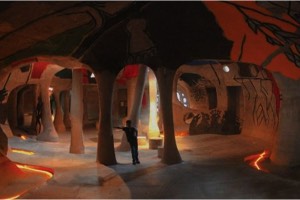
Gufa
Amdavad Ni Gufa was designed to demonstrate the collaboration between an artist and architect. An underground gallery housing the works of artist Maqbool Fida Husain, Doshi’s design was inspired by a discussion between the two that occurred thirty years prior to the project. It was about a response to climate, and the benefits of interred spaces.
-
Evening
Visit contemporary artist Bharti Kher’s studio, followed by dinner with private collectors.
-
Overnight
The Oberoi Hotel.
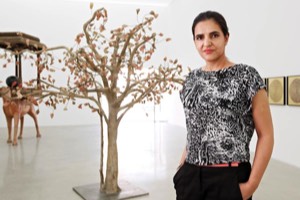
Bharti Kher
Bharti Kher’s oeuvre spans more than two decades and includes paintings, sculptures, and ready-made objects and installations. Throughout her practice she has displayed an unwavering relationship with surrealism, narrative, and the nature of things: inspired by a wide range of sources, from Oppenheim to Bourgeois, Bacon, and Blake, Kher’s work moves through time, using reference as a counterpoint and contradiction as a visual tool.
DAY 9
Wednesday, January 29: NEW DELHI
-
Morning
Morning Talk at hotel on Humayan’s Tomb given by Glenn Lowry, MoMA’s Director.
-
Late Morning
Visit Humayan’s Tomb.
-
Lunch
In the area.
-
Afternoon
Tea at a private collector's home.
-
Dinner
Evening Dinner with International Council members Beatrice and Ambassador Andre Correa do Lago at the Lutyens designed Brazilian Embassy.
-
Overnight
The Oberoi Hotel.

Humayan’s Tomb
This tomb, built in 1570, is of particular cultural significance as it was the first garden-tomb on the Indian subcontinent. It inspired several major architectural innovations, culminating in the construction of the Taj Mahal.
DAY 10
Thursday, January 30: NEW DELHI
-
Morning
Optional visit to Qutub Minar, built in the 12th century, a UNESCO World Heritage Site.
-
Late morning
VIP tour of the Indian Art Fair.

Qutb Minar
-
Lunch
At the Art Fair.
-
Afternoon
Tour of the Modernist architecture of Delhi.
-
Dinner
Evening Cocktails at a private collector’s before dinner at a private home.
-
Overnight
The Oberoi Hotel.

India Art Fair
India Art Fair sees a particularly strong representation of leading Indian galleries, deepening its audience’s engagement with the region’s creative landscape. Complementing the fair’s regional perspective, carefully selected galleries from across Asia, Europe, North and South America showcase their globally-recognized artists, many of whom have never exhibited in the country before.
DAY 11
Friday, January 31: NEW DELHI
-
Morning
Individual departures as required.
-
Post-trip
Or continue to post-trip to Agra and Jaipur.
*Please note that this programme will be subject to change.
